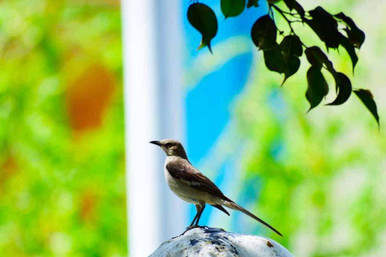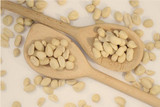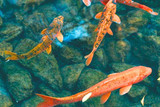World Habitat Day: Exploring Wild Bird Habitats
World habitat day. Safe and nurturing habitats are an incredible aspect for species’ survival all over the globe. Damage or destruction to any habitat can cause many species to have to uproot and find a new environment for them to survive in. However, this can be dangerous as it typically exposes them to new threats and increases their vulnerability.
That’s why the first Monday of October of every year is designated as World Habitat Day. A day to reflect on the state of the world’s habitats as well as act as a reminder to everyone about the power that we have. The responsibilities we have to shape the futures of all our habitats – industrial, urban, and rural.
To celebrate World Habitat Day, in true Kennedy Wild Bird Food fashion, we’ve created this article to explore the habitats of wild birds.
What is a Habitat?
An entire ecosystem that is made up predators and prey, bacteria and fungus, insects, waterholes and landforms, the plants and the weather are all things that contribute towards the identity of a habitat. And due to the different locations, habitats all have their own seasonal variations and climates that sustain the life specific to that environment.
There are many different types of habitats, including well-known ones like woodlands, grasslands, deserts, and beaches, as well as mountain ranges and canyons. Any amount of open space has the ability to support a thriving habitat for birds that fulfils the demands the species have for surviving there.
Exploring Different Habitats
Certain environments can produce extremely diverse habitats which can alter what kind of species may dwell there in co-existence with each other. Let’s explore some of the different habitats and what lives there.
Farmlands
Farmland is crucial for our wildlife considering it makes up about 75% of the UK’s land. You will probably come upon some of our best-known flora and creatures while exploring there or even just passing by.
Brown hares, foxes, cows, and sheep may among the more commonly known species of animals present in farmland habitats but what a lot of people aren’t always well-versed on is the bird species.
Plenty of bird species thrive in farmland habitats, a barn owl being the one most people will be familiar with. A much-loved countryside bird. They can be seen all year-round but, considering they’re nocturnal birds, have more of an affinity for being spotted best at dusk.
Birdsong heard in the countryside most likely comes from the skylarks and lapwings, both well-known for their songs. Lapwings in particular have quite distinctive noises – wild squeals. Both species can be seen all year round, but lapwings move to lowland fields in the winter.

Usually seen the most from March to October, open pastures are a popular hangout spot for these long-tailed, red throat birds. Anywhere that is readily accessible and home to plenty of insects. Which is also where you’ll find yellow wagtails. Hopping around near cattle hooves to grab insects (that the hooves probably disrupt).
Woodlands
One of Britain’s richest, most diverse habitats: the woodlands. And we’re talking true woodlands, not forests built for wood chopping. Often quieter in the winter months, this environment usually has the hustle and bustle once spring arrives.
Most of the time, the biodiversity existing in your woodlands depends on which area of the UK you live in, the time of year, as well as the tree species. Plants and shrubs that grow in woodlands are responsible for providing homes and food for a number of creatures.
Take oak trees, for example. They’re capable of supporting more than 200 insect species.
Pied flycatchers go into tree holes in oak woodlands in the North and West in spring once they arrive whilst woodcocks, which can be spotted all year round, often take to nesting on the ground. Especially when they have all those fallen leaves to settle into. Woodcocks are nocturnal, too, so they spend most of their days in dense cover until the evening arrives.
Another bird that takes to hiding is the nightingale, perhaps the most famous singing bird. Though they arrive in April until early June, and leave again from July to August, their singing can be heard both day and night.

Why Do Habitats Need Protecting?
Everything in nature has a balance, even things are seemingly insignificant or hardly noticed habitat components. Things like rotting logs or rock piles near riverbanks. Even strewn flowers play a part in preserving the balance of the habitat.
The decaying wood serves as a nesting site for birds, a food source for insects, and a haven for ground-dwelling birds. Rocks assist in regulating water flows which help to reduce erosion and maintain the strength of the riverbed.
Those bloomed and cluttered flowers are bright patches enticing pollinators for the benefit of the birds. It’s also possible that the blossoms themselves will provide a lot of nectar. Insects in lichen are a food source while the lichen can be utilised as nesting material.
In order for any habitat to thrive, it needs to be healthy. That means it has to have range and numbers otherwise the species surviving there begin to suffer and their numbers dwindle.
Protecting Bird Habitats
1 in 3 of UK bird species are now on the Red List of Conservation Concern. These are the species that are in need of urgent help as their numbers have been declining severely.
Luckily, there are many ways that habitats can be protected. Unfortunately, to truly save habitats it would take a vast majority of us, not just a few. But if you want to help, here’s a few things you can do:
- Reduce Your Usage
The less you use of anything, the less you risk contaminating the environment. Less plastic means fewer traps for birds and sea creatures, less electricity and gas usage equals less demand, resulting in fewer of those hazardous by-products.
- Check Chemical Products Before Use
Plenty of chemicals, for farming or household chores, contain toxins that are incredibly harmful to environments and the wildlife within them. Many household products for helping to maintain gardens can be toxic to plants, small mammals or insects that reside there. Switch to non-toxic, naturally made products.
- Make Your Garden Wildlife Friendly
Every space, even a small garden area, can help protect wildlife. Lawns with un-cut grass are filled with plenty of insects, insects which birds can feed on. And flowerbeds with mini shrubs can provide cover and sometimes berries for birds and other small mammals.
Woodpiles, compost, and trimmings are amazing for gardens. Not only is compost a natural technique for recycling waste but when paired with woodpiles, they can be extraordinary hibernating and feeding environments for animals. Particularly ground-dwelling birds, too.
Adding bird feeders with nutritious and seasonal bird feed is an amazing way to make sure that birds are getting the nutrients they need even in times when food is scarce. And putting a bird box near a bird feeder is a great way to make sure that birds have a shelter.
Check out the types of bird feed we offer. If you haven’t got a bird feeder but are interested in getting one, why not view our range?
Explore Popular Articles
-
How Sunflower Seeds Can Improve Your Bird's Health
14th Jun 2024Birds are quite attracted towards sunflower seeds, but have you ever wondered about sunflower seeds&
-
The Ultimate Guide to Feeding Peanuts to Birds: Benefits and Considerations
16th May 2024Feeding Peanuts to birds is a common practice due to their high nutritious value. Being an excellent
-
Signs of Overfeeding Fish: How to Spot and Prevent it
7th May 2024Do you know that fish are more likely to die from overfeeding than starvation? One of the mos




